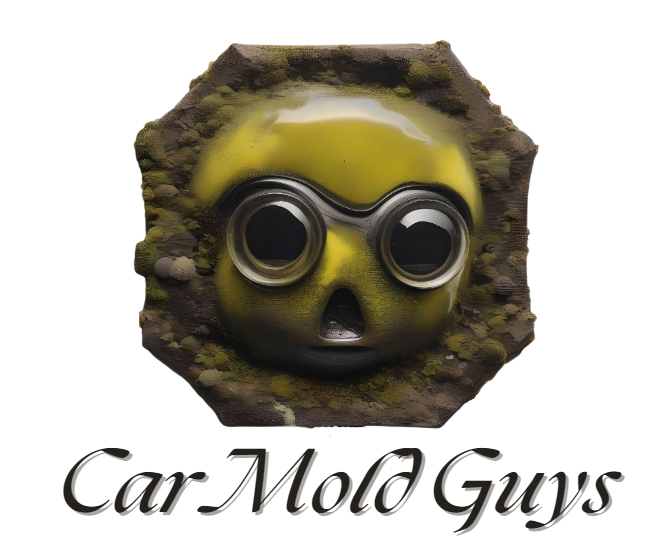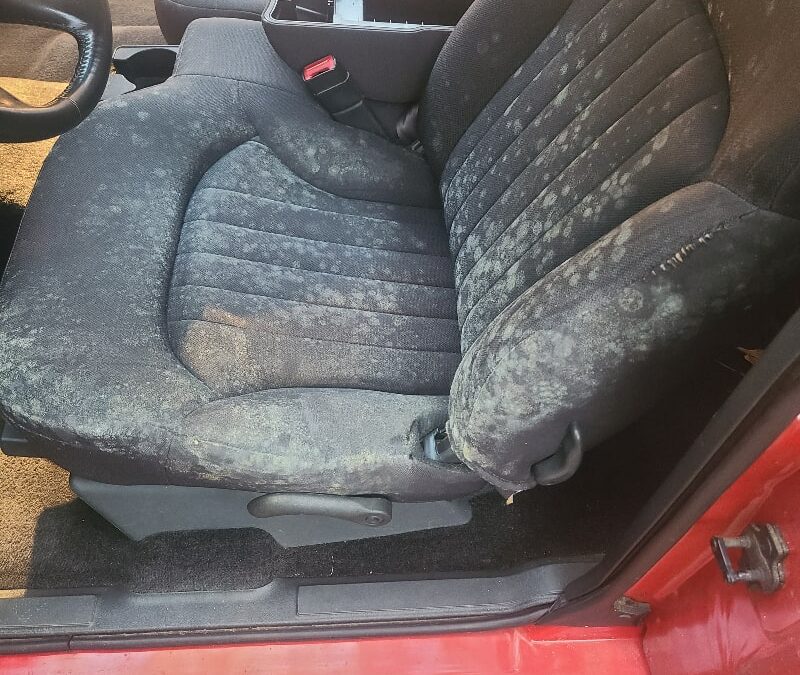Driving a car with mold can be harmful
Mold produces allergens which can trigger allergic reactions in sensitive individuals. It can also cause respiratory problems such as coughing, wheezing, and difficulty breathing.
Mold exposure can lead to respiratory issues and aggravate allergies in some individuals. If you notice there are signs that mold is growing in your vehicle, like you can see it on surfaces or the vehicle gets a musty smell, then it is essential you act quickly.
Mold is not just unsightly; it poses several health risks, especially for individuals with respiratory issues, allergies, or weakened immune systems. Exposure to mold can aggravate allergies, cause respiratory problems, and lead to other health complications.
Health Risks
- Respiratory Issues: Mold spores can trigger allergic reactions, asthma attacks, or respiratory infections in individuals sensitive to mold.
- Allergies: Mold exposure can cause allergic symptoms such as sneezing, coughing, congestion, and irritated eyes or skin.
- Asthma: For people with asthma, mold exposure can exacerbate symptoms and lead to breathing difficulties.
- Immune System Reactions: Prolonged exposure to mold can weaken the immune system, making individuals more susceptible to respiratory infections and other illnesses.
RECOGNIZING THE SIGNS OF MOLD IN YOUR CAR
Identifying severe water damage in a vehicle involves assessing several key areas and symptoms. Here are signs that indicate your vehicle may have severe water damage:
Interior Signs
- Visible Mold Growth: Mold is a fungus that can grow in various colors, including white, green, black, or brown. In cars, it tends to appear on seats, carpets, vents, steering wheels, and under the floor mats. Mold often appears as small, fuzzy spots on surfaces like seats and floor mats. The early signs can be subtle, but by recognizing these, you can prevent a more significant mold problem.
- Visible Water Lines: Look for water lines or stains on upholstery, carpets, door panels, or dashboard surfaces. These indicate the level to which water has penetrated that could lead to mold growth.
- Persistent Dampness: Even after attempts to dry the vehicle, persistent dampness in carpets, seats, or interior panels suggests extensive water saturation.
- Musty Odor: A strong, persistent musty smell indicates mold growth, which typically thrives in damp environments.
- Visible Mold or Mildew: If you see patches of mold or mildew on surfaces inside the vehicle, it indicates prolonged exposure to moisture.
- Warped or Swollen Materials: Materials such as door panels, trim, or upholstery that appear swollen, warped, or have changed shape due to water absorption.
- Health Symptoms: Persistent coughing, sneezing, itchy eyes, or skin irritation while in the car can be signs of mold exposure.
Electrical and Mechanical Signs
- Electrical Malfunctions: Issues like malfunctioning power windows, door locks, lights, or erratic behavior of electronic systems could indicate water damage to electrical components.
- Engine Problems: If water has entered the engine through the intake or exhaust during flooding, attempting to start the engine can cause severe damage. Signs include difficulty starting the engine, unusual noises, or misfires.
- Transmission Issues: Water entering the transmission can lead to problems such as erratic shifting or loss of gears.
Structural Signs
- Rust and Corrosion: Look for signs of rust or corrosion on metal components, particularly in areas exposed to water intrusion.
- Undercarriage Inspection: Check underneath the vehicle for signs of water accumulation, rust on frame components, or damage to suspension parts.
Operational Signs
- Unusual Smells: Aside from musty odors, any unusual smells, such as burning or chemical odors, could indicate electrical or mechanical damage due to water exposure.
- Loss of Vehicle Functionality: Severe water damage can compromise the vehicle’s overall functionality and safety. If you notice significant issues with how the vehicle operates, it may indicate internal damage.
CAUSES OF MOLD IN CARS
Understanding the causes of mold can help in prevention. Mold in cars usually originates from excessive moisture, often due to the following reasons:
Leaks
- Water leaks from a sunroof, door, or window seal can lead to dampness that, if left unchecked, can promote mold growth.
Food and Drinks
- Leaving food or drinks in the car can attract mold. The organic material provides a food source for the mold, and if left to decompose, it creates a perfect breeding ground for spores.
Wet Items
- Placing wet items like clothes, umbrellas, or towels in your car and leaving them can create a humid environment conducive to mold growth.
If you suspect there’s mold in your vehicle, here are some steps you can take
- Remember, mold can be harmful, so it’s important to wear protective gear while cleaning, such as gloves and a mask.
- Locate the Mold: Inspect your vehicle thoroughly. Check the carpet, A/C vents, and other damp places including your cargo space.
- Clean the A/C Vents: If you notice the smell of mold when you turn on the air conditioning, chances are that it’s in your A/C vents.
- Air Out and Vacuum Your Car: Open all doors and windows to let fresh air circulate. Vacuum the interior to remove any dirt or debris that could contribute to moisture buildup.
- Use Car Cabin Cleaners: Spray and brush the interior with a cleaner specifically designed for car interiors.
- Change the Cabin Air Filter: The air filter can trap mold spores, so replacing it can help prevent the mold from spreading.
- Use a Steam Cleaner: A steam cleaner can help remove mold from upholstery and carpets.
Professional Assessment
If you suspect severe water damage or if your vehicle has been exposed to flooding or significant water ingress, it’s crucial to have it inspected by a service like Lonadier’s Mold Removal.
Comprehensive Assessment
- Thorough Inspection: Professionals conduct a detailed assessment to determine the extent of mold growth and identify hidden mold in hard-to-reach areas and diagnose any hidden damage. They can also recommend appropriate repairs or remediation.
- Moisture Detection: Utilize specialized tools to detect moisture sources and areas prone to mold growth, addressing underlying causes to prevent future outbreaks.
Advanced Equipment and Techniques
- Specialized Equipment: Use of advanced tools such as HEPA vacuums, air scrubbers, and dehumidifiers to remove mold spores from the air and surfaces.
- Containment: Implement containment measures to prevent mold spores from spreading to unaffected areas during removal.
Conclusion
Addressing water damage promptly can prevent further deterioration of your vehicle’s condition and ensure its safety and reliability on the road.
Therefore, if you suspect there’s mold in your car consider seeking professional help for mold remediation, such as from a service like Lonadier’s Mold Removal, which offers professional mold remediation services.

